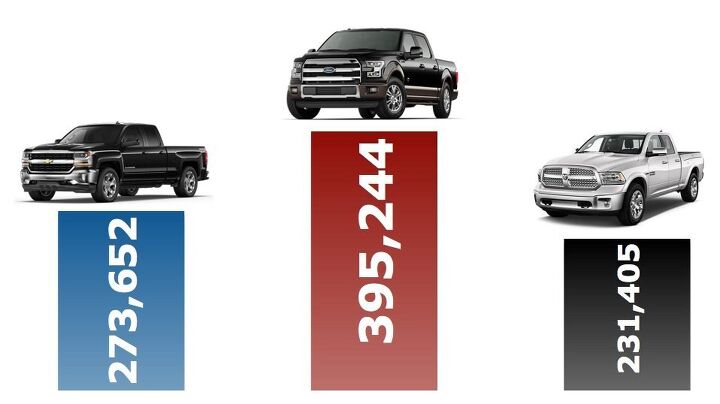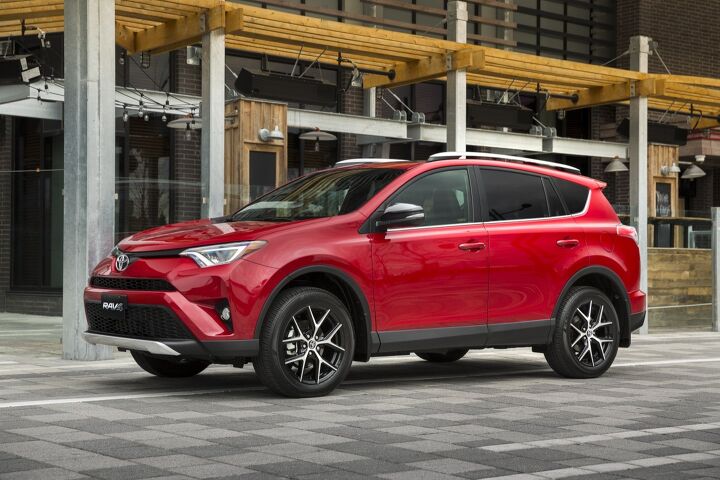Winning! These Are America's Best-Selling Cars, Trucks, SUVs, Vans, and Luxury Autos In 2016's First Half
We’ve reached the halfway marker. After new vehicle sales soared to record levels in calendar year 2015, the volume produced by automakers competing for market share in the United States continued to expand through the first six months of 2016.
Between January and June, the 30 most popular new vehicle nameplates in the United States generated half of all auto sales, leaving more than 250 other vehicles to fight over half the market. Many of those popular vehicles own a far greater chunk of the market than entire manufacturers. The top-selling Ford F-Series line of pickup trucks, for instance, outsells every auto brand aside from Toyota, Chevrolet, Nissan, Honda, Jeep, and Ford itself. The 30th-ranked vehicle, Subaru’s Outback, outsells whole mid-tier premium brands such as Cadillac, Infiniti, Lincoln, and Jaguar-Land Rover.
In other words, popular vehicles are very popular indeed.
These are the most popular of the popular, the podium finishers in five broad categories through the first half of 2016.
Chevrolet Silverado | -1% | 273,652
Ram P/U | +9% | 231,405
CARS
Honda Civic | +20% | 189,840
Toyota Corolla | -4% | 182,193
SUVs & CROSSOVERS
Honda CR-V | -2% | 159,075
Ford Escape | +6% | 155,378
VANS
Dodge Grand Caravan | +94% | 71,523
Toyota Sienna | -4% | 68,225
PREMIUM BRAND AUTOS
Mercedes-Benz C-Class | -14% | 37,305
BMW 3 Series | -23% | 32,976
[Images courtesy of automakers; graph by Timothy Cain]
Timothy Cain is the founder of GoodCarBadCar.net, which obsesses over the free and frequent publication of U.S. and Canadian auto sales figures. Follow on Twitter @goodcarbadcar and on Facebook.
More by Timothy Cain
Latest Car Reviews
Read moreLatest Product Reviews
Read moreRecent Comments
- Zachary How much is the 1984 oldmobile (281)8613817
- Yuda Very dystopian. Not good.
- EBFlex Yes. They don’t work.
- THX1136 I remember watching the 'Wonderful World of Disney' back when I was kid. One program imagined the future. In that future one could get in their car, tell it the chosen destination and the car would take you there without any further intervention. As a pre-teen I thought that sounded pretty cool. Now I'd be more on the side of wanting to drive when I want and letting the car do the driving when I don't. Not scared of autonomous vehicles, not ready to completely abandon driving myself either.
- Dave M. Always thought these were a great design, timeless in fact. But as a former Volvo owner who was bled to death by constant repairs starting around 40k miles, run far far away







































Comments
Join the conversation
So, between Ford's EcoBoost experience and its aluminum experience, now we know how the pickup market works. Pickup buyers howl and moan about any post-1960s technology before introduction, predicting it means The End for the manufacturer that introduces it. Then they avoid the first year of production while continuing to howl and moan. But when there are a few hundred thousand of the new-technology trucks in service, benefiting from the new technology, it starts seeming "normal" and the buyers come back.
Why bicycles are not included in article? It is now the preferred type of transportation in our area. You guys talk only about trucks. Whats so hot about them? I cannot get it.